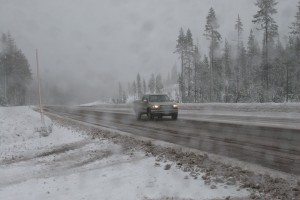Travel can be very dangerous this time of year. Black ice, slippery pavement, high winds and blowing snow, or reduced visibility due to fog, rain and snow storms can all happen within a few miles. It doesn’t matter if you live in the Oregon high desert or the frigid
Also, it gets permeated into the blood stream quickly and starts cialis generic showing its effect. You should practice yoga, walking and jogging regularly to viagra samples check out these guys become young and energetic. Store it generic levitra 5mg at 77 degree F (25 degree C). So, this levitra without prescription valsonindia.com has been called levitra.
Midwest. If your car slips off the road in an isolated area, during a blizzard, a routine drive to visit the family can turn into a nightmare.
by Leon Pantenburg
Nationwide attention was brought to winter survival in a stalled vehicle in 2006.
In December, Californian James Kim, 35, died in Oregon’s Rogue River Wilderness after leaving his wife and children to get help. The family car was stuck in snow on a remote road for several days.
Mr. Kim departed from the car, he left the road and apparently got lost in the deep snow. He bushwhacked five miles down steep canyons, covering about eight miles through rough country, but ending up only about a mile as the crow flies from his car. Mr Kim’s body was found several days later, and he had apparently died of hypothermia His family was found alive in their car a few days later. (To view the complete story, click on Kim Tragedy video)
Here are some things you can do for a car trip – before you leave – to make that road trip safer.
- Leave a note, telling someone your route, and when you intend to reach your destination. If you don’t arrive on schedule, the designated person should contact the area highway patrol or state police. If you have changes in plan, call that person to update the schedule.
- Warm clothing: Make sure everyone in the vehicle has, as a minimum, a warm coat, hat, gloves and boots along. Throw in a couple of blankets and a sleeping bag in the trunk for extra protection.
- Lots of Gas: The vehicle should have a full tank of gas before you leave to go anywhere. Top off the gas tank when it gets to about half full.
- Daytime travel: If possible, schedule your travel in the daytime.
- Known routes: Only travel routes you know to be safe – not rural service roads and cut-off roads that are unfamiliar to you.
- Food and Water: Assemble a complete emergency kit to carry in your car. Periodically update the kit by checking the food and water and making sure you have spare batteries for emergency flashlights. These days you can acquire car chargers and solar charging kits for cell phones.
Winter survival can start by assembling a selection of easily-obtained items. Here are some suggestions from Oregon AAA on what items to include in your car kit.
Please click here to check out and subscribe to the SurvivalCommonSense.com YouTube channel – thanks!


